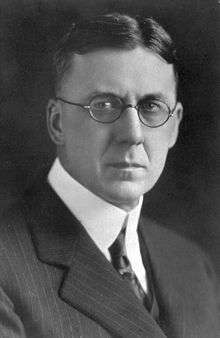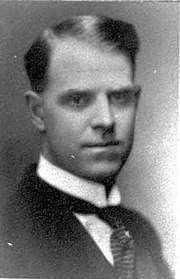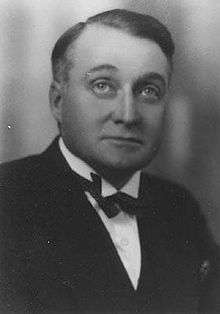1926 Alberta general election
The 1926 Alberta general election was the sixth general election for the Province of Alberta, Canada. It was held on June 28, 1926, to elect members of the Legislative Assembly of Alberta. The writs of election were issued on May 10, 1926, allowing an election period of 40 days.
| |||||||||||||||||||||||||||||||||||||||||||||||||||||||||||||||||||||||||||||
60 seats in the Legislative Assembly of Alberta 31 seats were needed for a majority | |||||||||||||||||||||||||||||||||||||||||||||||||||||||||||||||||||||||||||||
|---|---|---|---|---|---|---|---|---|---|---|---|---|---|---|---|---|---|---|---|---|---|---|---|---|---|---|---|---|---|---|---|---|---|---|---|---|---|---|---|---|---|---|---|---|---|---|---|---|---|---|---|---|---|---|---|---|---|---|---|---|---|---|---|---|---|---|---|---|---|---|---|---|---|---|---|---|---|
| Turnout | 67 percent[1] | ||||||||||||||||||||||||||||||||||||||||||||||||||||||||||||||||||||||||||||
| |||||||||||||||||||||||||||||||||||||||||||||||||||||||||||||||||||||||||||||
| |||||||||||||||||||||||||||||||||||||||||||||||||||||||||||||||||||||||||||||
After Herbert Greenfield had resigned as United Farmers leader and premier, John E. Brownlee accepted the position and led the UFA to a second election victory, increasing the UFA's number of seats.
1926 was the first general election that Single Transferable Vote was used in Alberta. Calgary, Edmonton and Medicine Hat continued to be multi member districts, previously electing members in a plurality Block Vote, now electing members under STV-PR, through the Hare Proportional Representation system.
This election also saw change to the voting system used outside the large cities. Rural districts were single member districts, and MLAs were elected under Alternative Voting system under which rural voters, like their city counterparts, cast preferential ballots, ranked the candidates.
This dual system of voting would last until 1959. Medicine Hat after 1926 changed to a single-member constituency, whose MLA was elected through AV.
Under STV in Edmonton, the UFA captured one seat in Edmonton where it had taken no seats in 1921 under the Liberal government's Block Voting system. It also took a great share of the rural seats. It took four rural seats that had been captured by Liberal candidates in 1921 (Beaver River, Leduc, Sedgewick and Whitford), and one that had been won by an Independent in 1921 (Claresholm). The UFA also won the district of Empress formerly known as Redcliffe, which had been won by the UFA in 1921. The UFA lost its seat in Medicine Hat but gained a seat in the newly created next-door Cypress district. It also lost its St. Albert seat.
Conservatives, being a less popular party, had been badly treated under FPTP and Block Voting but now did better. It won two seats each in Edmonton and Calgary, where Block Voting had been replaced by STV.
At the time of the election call, six seats were sitting vacant. They had been vacated by MLAs who had run in the 1925 federal election. MLA C.W. Cross was elected in the federal election. William McCartney Davidson, Calgary Independent MLA, was another one of those who had left. (Strathmore Standard, Feb. 24, 1926, p. 1)
The UFA vote share went up 10 percent in this election compared to 1921, but this is likely more a result of urban voters not being allowed to cast multiple voters as they had done in 1921, which had artificially raised the Liberal vote count and percentage and lowered the UFA percentage recorded for that election.
Under STV Edmonton elected mixed bag of representatives. UFA, Liberal, Conservative and Labour MLAs were all elected, which compared well with the total sweep that Liberals made in 1921 under Block Voting. In Calgary Conservative supporters found representation under STV where they had been shut out under Block Voting in 1921. Under STV in Medicine Hat a Liberal and a Conservative took the city's two seats - which was fair as the two parties had about equal support there.
Under Alternative Voting outside the cities, if no candidate took a majority of votes in the first count, votes were transferred until a candidate acceptable to a majority of the voters was determined. In Bow Valley the UFA candidate leading in the first count did not have as much support from Conservative supporters and a Liberal took the seat. In four districts only two candidates ran so vote transfers were not needed. Three-way contests would be a feature of most elections from here on in, as Canada had passed the point when two parties dominated politics. Labour and farmer parties were here to stay to fight it out against the two old-line parties.
In fifteen of the province's 49 rural districts three or more candidates ran and vote-splitting meant no one candidate took a majority of the votes on the first count. A UFA candidate was in the top two spots in most of these contests. Liberal and Conservative party supporters were split on whether to support the other old-line party or the UFA, if their candidate was eliminated and their ballots forced to transfer to another. In many cases many Conservative and Liberal back-up preferences went to the UFA candidate who won the seat if he had been leading in the first count. The only turn-overs where the candidate leading in the first count was not elected were in Bow Valley, as mentioned above, and Pincher Creek, where Conservative back-up preferences favoured the UFA candidate who took the seat over the previously-leading Liberal candidate. Overall the two turn-overs cancel each other but two different individuals were elected due to the Alternative Voting system than would have been elected under FPTP.
The UFA's seat majority was due to its victories in the rural areas. Its moral right to power rested on the fact that to be elected in a rural district it meant a candidate had to have support from a majority of a district's voters. The UFA was elected through majority support in 42 of the province's 52 districts, and its candidate in Edmonton was the most popular of all the candidates who ran there as well.
Results
| 1926 Alberta provincial election[2] | |||||||||
|---|---|---|---|---|---|---|---|---|---|
| Party | Party Leader | # of candidates |
Seats | Popular Vote | |||||
| 1921 | Elected | % Change | # | % | % Change | ||||
| United Farmers | John E. Brownlee | 46 | 38 | 43 | +13.2% | 71,967 | 39.68% | +10.76% | |
| Liberal | Joseph Tweed Shaw | 54 | 15 | 7 | -36.4% | 47,450 | 26.17% | -7.90% | |
| Labour | 12 | 4 | 5 | +25.0% | 14,123 | 7.79% | -3.25% | ||
| Conservative | Alexander McGillivray | 56 | - | 4 | 40,091 | 22.10% | +11.12% | ||
| Independent Labour | 1 | - | 1 | 2,467 | 1.37% | -1.69% | |||
| Independent Liberal | 5 | - | - | 2,728 | 1.51% | 1.02% | |||
| Independent | 3 | 4 | - | -100% | 1,254 | 0.70% | -8.96% | ||
| Independent UFA | 5 | - | 999 | 0.55% | |||||
| Liberal–Progressive | A. D. Campbell | 1 | - | 252 | 0.13% | ||||
| Total | 183 | 61 | 60 | - | 181,331 | 100% | |||
Members elected
For complete electoral history, see individual districts
(* Cook's defeat of Liberal candidate Bossenberry is the only instance in this election where a candidate who led in the first count was not elected in a second round count, under the preferential balloting system.)
See also
References
- Report on Alberta Elections, p. 42
- "Alberta provincial election results". Elections Alberta. Archived from the original on February 11, 2008. Retrieved 2008-01-13.



